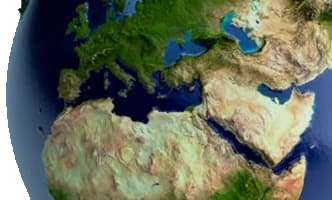Editorial Dec 2014
Approaching the end of an eventful year, I would like to welcome you to the new edition of MEPIELAN E-Bulletin and to express my deepest thanks and appreciation for your interest in reading and sharing with us the informative and thought-provoking material of this Bulletin. Retaining its high level of visibility and attendance, the Bulletin receives visitors from 163 countries. Its articles and elaborated news are quoted in academic articles, research papers and international reports, while authorizations are granted for their appearance in other international websites. It is our hope that the Bulletin, being already in operation for five years, continues to serve its fundamental purpose: to shed light on the importance of orienting our understanding of international environmental law and governance and their sustainability perspective towards the multifarious process of constructing and unfailingly developing international common interest. A global conception of justice can be adequately and substantially performed as common interest justice and it would be more than useful, in this respect, to recall a passage from Aristotle’s Nickomachean Ethics: “The political association”, he writes, “was originally formed and continues to be maintained for the interest of its members; and the lawgivers contemplate about it and postulate that justice is the common interest” (translation mine).
In a Guest Article of this edition, Dr. Maguelonne D?jeant-Pons, Executive Secretary of the Steering Committee for Culture, Heritage and Landscape, and European Landscape Convention, Council of Europe, provides an authoritative insight into the application of the comprehensive and contextual “landscape approach”, encapsulated in the innovative European Landscape Convention, to generating integrated spatial planning and management for coastal zones and marine areas. Underlining the important public interest role and function of landscape viewed in all its constituent parts (ecological, environmental, social, cultural and economic) and their inter-relationships, as contemplated by the Convention, the author clearly and most usefully pinpoints the elements of a common interest governance associated with the “landscape approach”: the appropriate balancing of landscape protection, management and planning activities; the pursuance of a dynamic preservation and enhancement of diversity and quality of the landscapes recognizing the fundamental role of knowledge; and the utmost importance of public awareness and active public participation. And as the author concludes, the European Landscape Convention serves as “benchmark by some countries” either “to initiate a process of profound changes in their landscape policies” or to “define their policy”. Relatedly, it would be of great interest, in our view, to envisage the European Landscape Convention as the subject of a more deliberation-based cooperative strategy between its Secretariat and the Barcelona Convention Secretariat. This would be a very promising institutional step to the right direction, in view of the complementary function of the Convention with the equally innovative Mediterranean Protocol of Integrated Coastal Zone Management, developed in the framework of the Barcelona Convention system, and the pertinent need to build a clustering in the governance of these two interrelated international instruments. Hence, both instruments could become more “visible” and their implementation could be performed more effectively and more efficiently in advancing international common interest.

